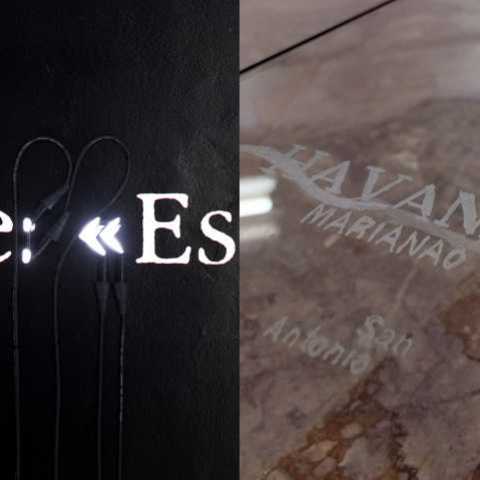Chelsea Space
CHELSEA space
Chelsea College of Arts
16 John Islip Street
London
SW1P 4JU
United Kingdom

Private view: Tuesday 21 January, 6-8.30pm
Exhibition runs: 22 January – 28 February 2020
Opening hours: Tuesday – Friday 11am-5pm
Artists Joseph Kosuth and Seamus Farrell have been invited to conceive two sites-specific works at Chelsea Space. The artists have presented similar versions of these works and installation concept on occasion of the 12th Havana Biennale titled ‘Between The Idea and Experience’in 2015 at the historic Biblioteca National Jose Marti of Cuba. Both artists engage with the architectural and cultural context of the exhibition space showing how art is itself essentially a questioning process.
Kosuth’s installation entitled ‘(A Grammatical Remark) #11’, 2019 develops from the artist’s interest and use of the philosopher Ludwig Wittgenstein’s theory of language, and a body of works referred to as Kosuth’s Wittgenstein Series begun in 1988. Through the use of an appropriated text from the renown novel Paradise, by Cuban author José Lezama Lima, famously edited by the writer Julio Cortàzar, Kosuth physically and conceptually plays on the notion of ‘punctuation and grammar’ and literally punctuates the space by creating a grammatology of his own. The presentational aspects of the installation include resurfacing the walls with a single line of silkscreened text traversing the architectural context in one continuous line. The text is articulated with white neon components forming all the points of the sentence's punctuation. For Kosuth what begins as a formal device in a shift of meaning ends in a metaphorical investigation of art’s basic agenda.
Farrell’s glass floor piece titled ‘Britain, A Horizon Line Alined’, 2019 is a reflection on the inherent transitory power of delineation, the act of marking perimeters, and defining spaces through line drawing and boundary making; revealing how the gesture of outlining a perimeter is politically charged. The work refers to the idea of a line as a boundary, not just a physical boundary but also the artificial political perimeter that defines the nation in which the work is located. The viewer is invited to question current changes in geo-politics and rethink the cultural impact and value of these shifting perspectives.
